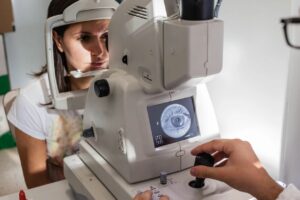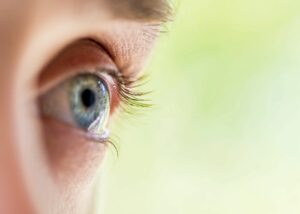June is Cataract Awareness Month. According to YourSightMatters.com, “Cataracts are the leading cause of vison loss in the United States, and it is the leading cause of blindness in the world. There are 24 million Americans over the age of 40 who are affected by cataracts. By the time they’re 70, over one-half of all Americans will develop cataracts.” If not treated, cataracts can lead to blindness. Early detection and treatment of cataracts is critical to preserving eyesight.
What is a Cataract?
A cataract is the clouding of the natural lens of the eye. The lens of the eye is normally clear. It is mostly made up of water and protein in a precise pattern to keep the lens clear and let light pass through. While the exact cause of cataracts is unknown, it is believed that as we age, the proteins start to clump together and cloud a small area of the lens. Over time, the cataract may grow larger and distort the light passing through the lens.
There are 3 types of cataracts:
- Subcapsular cataracts occur on the back of the lens. People with diabetes or taking high doses of steroid medications are at higher risk for this type of cataract
- Nuclear cataracts occur deep in the center of the lens. They are primarily associated with aging.
- Cortical cataracts start on the periphery of the lens and work their way to the center like a spoke.
The majority of cataracts are age-related. There is no proven way to prevent age-related cataracts, but choosing a healthy lifestyle can slow the progression. Eating a diet rich in antioxidants has been shown to be associated with a reduced risk of cataracts and may slow their progression. It is recommended for you to follow a healthy diet that includes colorful fruits, vegetables, and whole grains. Also, avoid the following risk factors, and wear proper eye protection to avoid UV rays and eye injury.
Risk factors include:
- UV or other types of radiation
- Diabetes
- Eye infections or eye diseases
- Hypertension
- Obesity
- Smoking
- Prolonged use of steroid medications
- Statin medications
- Previous eye injuries or inflammation
- Previous eye surgery
- Hormone replacement therapies
- Excess alcohol consumption
- High myopia or nearsightedness
- Family history
Signs and Symptoms of Cataracts:
- Blurred or Cloudy vision
- Light seeming too bright or glaring
- Oncoming headlights may appear to have halos around them
- Colors may appear to be not as bright as they once were.

Some cataracts can bring about a temporary improvement in your near vision, but unfortunately, the improved vision is short-lived and will disappear as the cataract worsens. Some cataracts may not produce any symptoms until they are well-developed.
Unlike may eye diseases, vision loss due to cataracts can be restored. Cataracts surgery is one of the most commonly performed procedures in the United States, and has a 95% success rate. If you are experiencing any of the symptoms above, schedule an appointment with your eye professional today!
Our Eye Specialist:
Dr. David West, MD comes to Windom Area Health from Ophthalmology LTD in Sioux Falls, SD. Call 1-800-888-1433 to schedule an appointment. Click HERE to see our Outreach Calendar.
For more information and facts about cataracts visit the National Eye Institute at: https://nei.nih.gov/health/cataract/cataract_facts
Blog Written By: Brenda Muller, Outreach Clinic Manager
